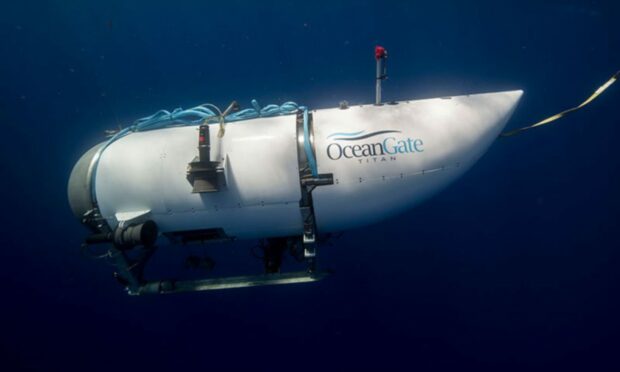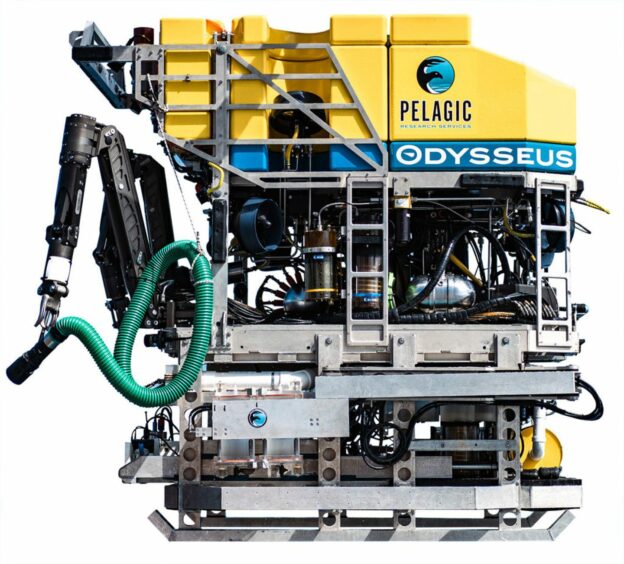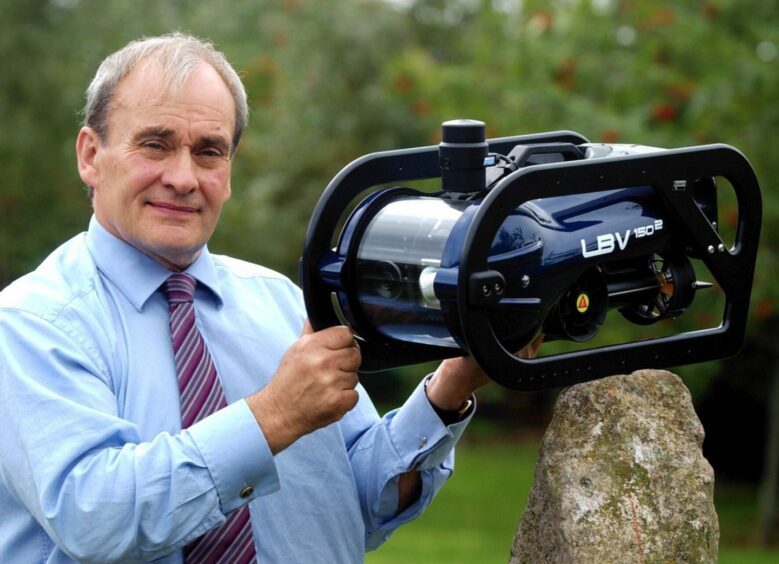Equipment designed by Aberdeenshire subsea firm Tritech was used to discover the debris field of the missing Titanic tourist submarine.
The Odysseus 6K ROV (remotely-operated vehicle), owned by US-based Pelagic Research Services (PRS), was the first subsea asset to find wreckage of the Titan submersible.
The ROV was fitted with Super SeaKing DST sonar designed by Westhill-based Tritech.
Described by Tritech as “the ultimate mechanical scanning sonar”, the technology uses acoustic waves to sense the location of objects in the ocean.
‘Bring it to a conclusion quickly’
Richard Marsh, who founded Tritech in 1990 and designed the Super SeaKing in 2005, said: “Several experts thought it could take weeks or months to find the lost debris. So it’s a feather in our cap to find it so quickly.
“As soon as they got an ROV down there it was found, thanks to the Tritech sonars.
“We were able to bring it to a conclusion very quickly which is something to be proud of, even if it’s tragic.”
According to reports, the debris found was that of the landing frame and cover of the missing submersible.
Tragic loss of life
The vessel was about 435 miles south of St John’s, Newfoundland, during a voyage to the Titanic shipwreck off the coast of Canada.
Hamish Harding, founding member of the board of trustees of The Explorers Club, was on board the undersea craft.
So too were UK-based businessman Shahzada Dawood and his son, Suleman Dawood, as well as OceanGate chief executive and founder Stockton Rush and French submersible pilot Paul-Henri Nargeolet.
Mr Marsh, now retired, said: “What I’m very pleased about, although it’s a terrible thing for the families, is at least they got closure quickly.
“At least we now know from analysing the debris site their death was instantaneous.
“The thought of them being trapped five days and slowly dying is unbearable.
“We’ve been able to confirm, which I hope is of some comfort, that at least they didn’t know anything about it.”
Tritech equipment part of ‘incredible’ submarine response
A statement put out by PRS confirmed the specification of the Odysseus 6K, with both the sonar and altimeter, which is used to measure distance above the seabed, being designed by Tritech, which is based in Peregrine Road.
North Sea pipe-laying vessel Deep Energy, managed and operated by Westhill-based subsea firm TechnipFMC, was also used during the search.
PRS chief executive Edward Cassano said: “We were assigned the primary role of going to the seafloor to search for and to find Titan, having the diving capabilities for the depths of the Titanic wreckage.
“During transit, all Odysseus 6K ROV components were assembled, readied, and tested to prepare for an immediate response upon arrival at the last known location of the Titan.
“Both captains of the vessels Horizon Arctic and Deep Energy coordinated the staging of the co-operative effort, ensuring the most optimal and efficient means of conducting this rescue-focused mission.
“PRS was instructed to start searching within the vicinity of the last-known location of the Titan.
“Once Odysseus was able to reach the ocean floor the debris field was located not long after.
“We have been just one part of an incredible and overwhelming maritime rescue response.”
Tritech has been contacted for comment.



